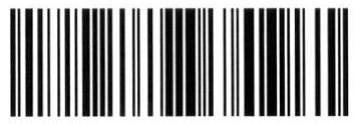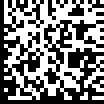About Two-Dimensional (2D) Vaccine Barcodes
This page provides background information related to 2D vaccine barcoding initiatives.
Why Do We Need 2D Barcoding?
The National Childhood Vaccine Injury Act (NCVIA) requires documentation of vaccine product identification and vaccine lot number. The American Academy of Pediatrics (AAP) recommends documenting vaccine expiration date. However, these data are generally either handwritten or typed into an electronic medical record (EMR) system and/or immunization information systems (IIS) system, and are frequently missing or incorrect within the IIS and Vaccine Adverse Event Reporting System (VAERS) reports. Implementation of a 2D barcode on vaccines could allow for rapid, accurate, and automatic capture of these data by a handheld imaging device, or scanner, which could populate these fields in an EMR and/or an IIS. 2D barcodes can contain more information than linear barcodes in a smaller space. Linear barcodes currently contain vaccine product identification information only. If used for vaccines, 2D barcodes could contain the vaccine product identification information as well as the lot number and expiration date.

Linear Barcode
Vaccine Product Identification Only

2D Barcode
Vaccine product identification, Expiration Date, and Lot Number
Adoption Strategies for 2D Barcodes Pilot
In October 2013, CDC initiated a second pilot project to assess the impact of the introduction of 2D barcodes onto unit of use or primary vaccine products (e.g. vials, syringes). With the increased number of 2D barcoded vaccines on the market, this project expanded upon the intent of the first pilot. This project evaluated the data captured and operational processes in various vaccine administration settings, which included physician settings, pharmacies, and mass vaccination clinic.
Primary Objectives
- Evaluate the effect of 2D barcodes on the completeness and accuracy of vaccine administration data
- Obtain practitioner perspectives on 2D barcode adoption and use
- Observe the effect of 2D barcoded vaccines on practice inventory and vaccination operations.
The project enlisted three vaccine manufacturers (GlaxoSmithKline, Merck, and Sanofi Pasteur) and approximately 90 immunizers.
The participating manufacturers placed 2D barcodes containing product identifier, lot number, and expiration date onto selected vaccines primary packaging. These barcoded vaccines were then distributed via the normal supply chain to the participating providers. Pilot participating providers were asked to scan the data in the barcode on these vaccines at or near the time administration. The scanners were configured to populate the lot number and expiration date directly into the immunizer’s electronic record systems for each vaccine.
Additionally, a subset of the participating immunizers were selected to participate in a time and motion study to assess the impact of the use of 2D scanners and barcoded vaccine products on administration and inventory procedures.
Summary Report - Adoption Strategies for 2D Barcodes Pilot
A Summary Report [38 pages] of this project is available.
Top of Page2D Vaccine Barcode Pilot
In September 2011, CDC initiated a pilot project to assess the impact of the introduction of 2D barcodes onto vaccines.
Primary Objectives
- Evaluate the effect of 2D barcodes on the completeness and accuracy of vaccine administration data
- Obtain practitioner perspectives on 2D barcode adoption and use
- Observe the effect of 2D barcoded vaccines on practice inventory and vaccination operations.
- Apply 2D barcodes to Vaccine Information Statements (VIS)
Pilot at-a-Glance
- Vaccination information collected Aug 2012 - May 2013
- 10 Immunization Awardees
New Jersey
New York
Oregon
Florida
Wyoming
New York City
Washington
Michigan
Iowa
Alaska
- 217 public and private practices
- 2 Vaccine Manufacturers
GlaxoSmithKline
Sanofi Pasteur
Summary Report of 2D Vaccine Barcode Pilot
A Summary Report of the Pilot [27 pages] is available.
Additional Workflow Analysis (WFA) Report
During the course of the 2D Vaccine Barcode Pilot two sets of workflow analyses were conducted: one at the beginning of the Pilot and the other towards the end. The first took place at ten (10) participating practices during 2012-2013; the results of this analysis were included in the Summary Report (above). The second analysis took place at ten (10) participating practices in 2014; for this report a more detailed separate report [1.05 MB, 103 pages] was developed.
Development and Placement of 2D Barcodes on VIS — Vaccine Information Statements (VIS)
All VIS have been modified to contain a two dimensional barcode with the VIS type and the VIS Publication Date. Providers are also required to document in the patient’s permanent record the VIS publication date. With these barcodes, providers have the potential to scan and input the VIS information into the patients' EHR. For more detailed information, go to the Barcodes on Vaccine Information Statements web page.
Top of Page2013 Education Forum
The 2D Vaccine Barcode Pilot's (Pilot) Education Forum (Forum) was conducted April 14-15, 2013. Seventy eight (78) immunization community stakeholders including vaccine manufacturers, public and private immunizing providers, and electronic medical record (EMR) vendors, Immunization Information Systems (IIS) staff, and 2D barcode scanner vendors came together to discuss successes, opportunities, challenges and next steps for implementing 2D barcoding on vaccine products.
Speaker presentations and panel discussions shared insights gained through the CDC 2D Vaccine Barcode Pilot, vaccine manufacturer application of 2D barcodes, Electronic Medical Record (EMR) and Immunization Information System (IIS) enablement of 2D barcode scanning, and immunizer adoption of 2D barcode vaccine scanning into practice operations. Facilitated working sessions produced rich discussion on the foremost interests and concerns of the immunization community in the areas of 2D barcoded vaccine standards, adoption and implementation.
The multiple immunization community perspectives represented at the Forum produced several valuable recommendations and helped to more clearly define required next steps in the advancement 2D barcoded vaccine use.
Forum Summary Document
Two-Dimensional (2D) Vaccine Barcoding Pilot Education Forum Report [54 pages], Summarizes the content presented at the Education Forum and includes questions and answers from attendees as well as a summary of the working sessions.
Forum Presentations
| Presenter | Presentation |
|---|---|
| Elizabeth Sobczyk, MSW, MPH Manager, Immunization Initiatives, American Academy of Pediatrics |
The 2D Barcode History and Progress [13 pages] |
| Paul Robinson Team Lead, Deloitte Consulting LLP |
2D Infrastructure Scanner Overview and Selection [10 pages] |
| Erin Kennedy, DVM, MPH Medical Officer, CDC/NCIRD |
The 2D Barcoding Pilot - Background and Overview [14 pages] |
| Marshall Gaddis, MS Analytics Consultant, Deloitte Consulting LLP |
The 2D Barcoding Pilot Lessons Learned & Early Findings [11 pages] |
| Kenneth Gerlach, MPH, CTR Health Scientist, CDC/NCIRD |
VIS Overview [13 pages] |
| Andrew Sharpin, MBA Senior Consultant, Deloitte Consulting LLP |
Workflow Analysis [13 pages] |
| Paul Robinson Team Lead, Deloitte Consulting LLP |
Breakout Sessions Overview [33 pages] |
2012 Vaccine Manufacturer’s Forum
A 2D vaccine barcoding manufacturer's forum was conducted in January 2012 to inform manufacturers and other stakeholders about the pilot project and to identify challenges and potential solutions. Over 60 industry stakeholders attended, including representatives from vaccine manufacturing companies, retail pharmacies, standards organizations, as well as the World Health Organization (WHO), The Food and Drug Administration (FDA) and CDC. A report summarizing the forum [32 pages] is now available.
2010 Potential Impact Assessment
CDC initiated a study in 2010 of the impact of vaccine products with 2D barcodes on vaccine production, clinical documentation, and public health reporting. The data items within the proposed 2D barcodes included product identification, lot number, and expiration date.
Study Objectives
- Document knowledge, attitudes, and beliefs about the impacts and implications of 2D barcodes.
- Assess societal, manufacturer, and healthcare provider economic benefits and costs, and the distribution of these costs and benefits across stakeholders.
- Review the exchange of health information and data standards relevant to 2D barcodes to assess how information can be transmitted across stakeholders. This issue is particularly important as the United States moves from primarily paper-based medical records system to electronic ones. A feasibility assessment and a series of recommendations about how to incorporate the information captured from the barcode into both the relevant standards and the guidance was produced.
Final Report
A final report [2.54 MB, 231 pages] from this project is available.
Top of Page- Page last reviewed: November 15, 2016
- Page last updated: March 7, 2016
- Content source:


 ShareCompartir
ShareCompartir